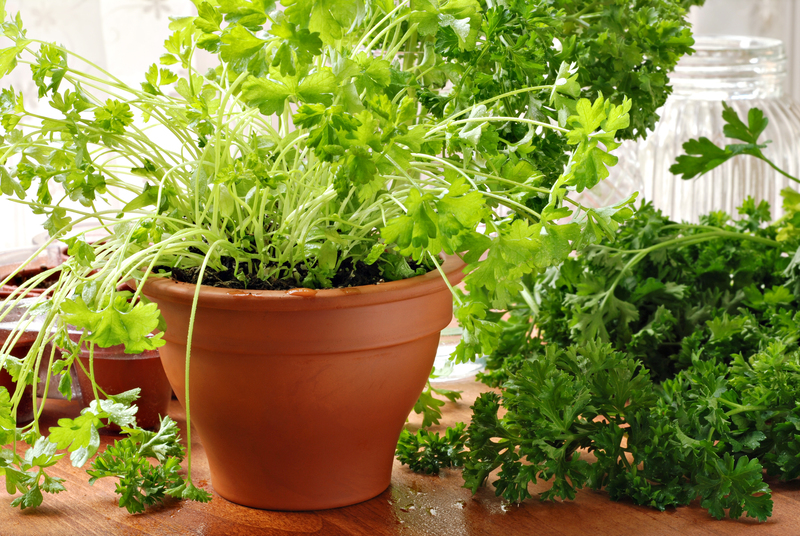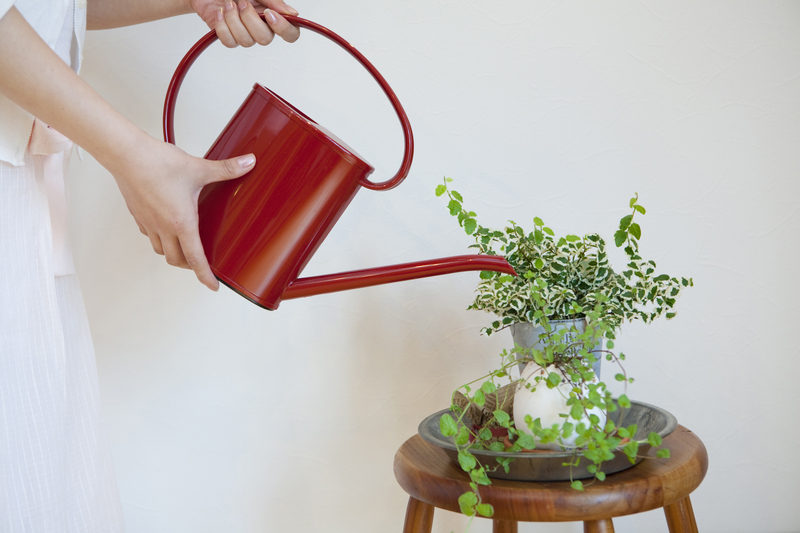Easy and Cost-Effective Ways to a Low Maintenance Garden
Posted on 01/06/2025
Easy and Cost-Effective Ways to a Low Maintenance Garden
Are you dreaming of a stunning garden that doesn't swallow up your weekends or your wallet? Creating a low maintenance garden is not only possible, but it can also be a fun and rewarding project for homeowners, renters, and newcomers to gardening alike. Whether you're managing a small backyard or a spacious landscape, you can achieve a beautiful, healthy outdoor area with minimal fuss and expense.
Why Choose a Low Maintenance Garden?
Low maintenance gardens offer a stress-free solution for busy lifestyles, frequent travelers, and those who simply want to enjoy their outdoor space without labor-intensive chores. These gardens are designed to save you time, water, and money, while still creating a vibrant haven for you and local wildlife. Plus, with the right plant selection and clever layouts, your garden can thrive with less effort and fewer resources.

Design Principles for a Low Maintenance and Affordable Garden
Keep it Simple and Manageable
- Start Small: If you're new to gardening, don't feel pressured to overhaul your entire yard. Begin with one area and expand gradually.
- Prioritize Function: Focus on spaces you'll use most, like a patio for relaxing or a pathway for easy access.
- Limit Lawn Area: Lawns can be one of the most time-consuming and costly parts of any garden. Reduce or replace grass with alternatives for a truly low-effort garden.
Maximize Your Layout
- Group Plants by Watering Needs: This makes irrigation efficient and helps reduce over or underwatering.
- Use Large Planting Beds: Fewer, larger beds are easier to maintain than numerous small ones.
- Incorporate Pathways: Stepping stones, gravel, or mulch paths can help define garden zones and make maintenance easier.
Budget-Friendly Tips for a Low Maintenance Garden
Not all solutions need to break the bank. There are plenty of easy and cost-effective methods to keep your easy garden low on effort and expenses.
Choose the Right Plants
Plant selection is key. Opt for hardy, native, or drought-tolerant species that suit your local climate. These plants require less water, fertilizer, and attention, making them ideal for a simple garden.
- Perennials: Unlike annuals, perennials return year after year, reducing the need for frequent planting.
- Evergreen Shrubs: Add year-round structure with minimal pruning needed.
- Ground Covers: Use creeping thyme, ajuga, or sedum to suppress weeds and reduce mowing.
- Ornamental Grasses: They add movement and texture, needing little upkeep.
- Succulents: Especially useful in dry areas, and require very little watering.
Mulch for Moisture and Weed Control
Mulching is an essential element of a low maintenance landscape. Adding a 2-4 inch layer of organic mulch (like wood chips, bark, or compost) helps retain soil moisture, suppresses weeds, and gradually improves soil quality as it breaks down.
- Save Money by sourcing mulch for free from local tree services or community yard waste programs.
- Choose Natural Mulches for added soil benefits and a professional look.
Embrace Hardscaping Elements
Hardscaping involves integrating non-living materials into your garden design, cutting down on maintenance while boosting aesthetics and usability.
- Gravel or Paving: Use these for attractive, weed-free areas that never need mowing or watering.
- Decks and Patios: Low-maintenance materials like composite decking or stone last for years and require occasional cleaning.
- Seating Areas: Furnish unused corners with a bench or a small table to create appealing spots without extra work.
Planting Strategies for Minimal Maintenance
Go for Dense Plantings
Dense landscaping crowds out weeds and shades the soil, preserving moisture. By planting closer together (without overcrowding), you reduce open soil, making it tough for weeds to take root.
Opt for Companion Planting
- Certain combinations deter pests and improve growth, leading to less work and cheaper pest control.
- For example, planting marigolds among vegetables can repel nematodes, while lavender can deter aphids and attract pollinators.
Minimize Plant Varieties
Sticking to a few well-chosen species simplifies care routines and increases visual harmony. For example, a mass planting of hostas or ferns can give a lush look with minimal upkeep--an easy win for your low-effort garden.
Low Maintenance Lawn Alternatives
Lawns are notorious for guzzling water, demanding mowing, and needing regular fertilizing. Fortunately, you have plenty of alternatives that are easier and more budget-friendly:
- Artificial Turf: Modern options look real and need only occasional rinsing.
- Ground Cover Plants: Clover, creeping thyme, or low-growing sedum provide green carpets with little upkeep.
- Gravel or Mulch Areas: Replace small, problematic lawn spots with attractive pebbles or bark chips.
- Patios or Decks: Extend your living space outdoors sans mowing or watering.
How to Remove and Replace Existing Lawn
- Sheet Mulching: Cover your lawn with cardboard and a thick layer of mulch; let it break down for new plantings without chemicals.
- Sod Removal: For immediate results, rent a sod cutter and reseed using native plants or lay down ground cover mats.
- Solarization: Cover with clear plastic in hot months to kill the grass before transforming the area.
Clever Irrigation and Water Savings
Watering can be one of the most labor-intensive and expensive parts of gardening. Smart approaches can help you save water and reduce your workload:
- Install Drip Irrigation: This targets roots, using less water while minimizing weeds and disease.
- Water Early or Late: Time your irrigation for early morning or evening to avoid rapid evaporation.
- Use Water Saving Gels in pots or flower beds to retain moisture for longer periods.
- Collect Rainwater in barrels for a free and eco-friendly water supply.
Choose Drought-Tolerant Plants
By incorporating drought-resistant plants, especially native species, your garden will require minimal supplemental watering after establishment. Research your local region's best options for low care gardening.
Practical Maintenance Tips to Minimize Effort
- Mulch Regularly to keep weeding to a minimum and maintain soil health.
- Prune Strategically: Plant species that don't need frequent cutting back.
- Automate Irrigation with timers for hassle-free watering.
- Choose Slow-Growing Hedges for easy clipping and tidy boundaries.
- Plan for Access: Ensure every plant bed and feature is easy to reach for occasional care.
Cost-Effective DIY Ideas for a Beautiful Garden
You don't need to hire expensive landscapers or invest in high-end materials. Try these affordable low maintenance garden ideas:
- Repurpose Old Materials: Use leftover bricks, pallets, or stones to create paths, edges, or raised beds.
- Upcycle Containers: Turn old buckets, barrels, or crates into striking planters for your porch or patio.
- Grow from Cuttings or Divisions: Multiply your existing plants for free by dividing perennials or rooting cuttings.
- Host a Plant Swap: Save money and expand your garden by exchanging surplus plants with friends or neighbors.
- DIY Compost: Build a simple compost bin from wood pallets for rich soil amendment at no additional cost.
Gravel and Stone: The Ultimate Low Maintenance Solution
Gravel, pebbles, and stones are a timeless and durable solution for easy garden areas. They suppress weeds, improve drainage, and never need watering or mowing. Use them to create paths, seating areas, or garden accents.
- Lay Weed Membrane underneath for extra protection against persistent weeds.
- Mix Sizes and Colors for visual interest and a professional finish.
- Add Pots or Sculptures atop gravel for low-effort style points.
Containers and Raised Beds: Easy to Manage and Maintain
Container gardening and raised beds focus your effort and cut down on weeding. Use large, self-watering pots to minimize watering chores, or raised beds to improve soil quality and accessibility. These solutions offer a stylish, organized way to manage your simple, cost-effective garden.
How to Build Simple Raised Beds
- Source untreated timber, concrete blocks, or recycled materials.
- Assemble a box, ideally 6-12 inches deep, on level ground.
- Fill with topsoil mixed with compost for a nutrient-rich growing medium.
- Add mulch to suppress weeds and hold moisture.
Low Maintenance Garden Features That Add Value
- Birdbaths and Feeders: Support local wildlife and enjoy garden visitors with minimal care.
- Decorative Gravel: Use colored gravel or slate chips for low-effort accents.
- Solar Lighting: Enhance ambiance without running wires or changing batteries.
- Garden Art: Choose durable, weather-resistant sculptures or ornaments for year-round appeal.

Common Mistakes to Avoid in Easy, Low-Cost Gardens
- Overcomplicating Design: Too many features can mean more maintenance.
- Poor Plant Choices: Avoid species that are invasive or prone to disease in your area.
- Neglecting Soil Preparation: Healthy soil means less time spent fixing plant problems later.
- Ignoring Local Climate: Research what naturally thrives in your region to cut down on replacements.
Conclusion: Enjoy Your Easy, Low Maintenance Garden
Building a low maintenance garden doesn't mean compromising on beauty or interest. With a few smart choices, some upcycled materials, and the right easy care plants, you can achieve a lush, welcoming outdoor space that minimizes work and maximizes enjoyment. Follow these easy and cost-effective gardening tips to spend more time relaxing and less time weeding, mowing, or watering--while still reaping the many benefits of your own slice of nature.
Ready to transform your garden? Start small, keep it simple, and let your personal style shine--all without breaking the bank or losing precious weekends!



